Art with Purpose: Designing School Murals that Inspire Learning, Curiosity, and Connection
by Colin Dockrill, AIGA
originally published to Association for Learning Environments

What do a hedgehog in scuba gear, a historic map of Route 1, and a diagram of the carbon cycle have in common?
They’re all images appearing in wall murals designed by HMFH Architects for public schools across Massachusetts, each carefully crafted to foster student engagement, curiosity, and connection. Beyond their visual interest, these murals serve as immersive teaching tools that reinforce school identity, enhance daily learning, and create vibrant, meaningful environments.
More Than Aesthetic: Murals as Learning Tools
School districts are under pressure to construct public school buildings with limited budgets. As a result, design is often driven by practicality with an emphasis on compactness, durability, and cost efficiency.
But even with these financial constraints, it’s possible to inject inspiration, creativity, and discovery—and well-conceived design elements such as wall murals are a powerful yet affordable way to do so. When thoughtfully designed and tailored to the school’s mission and community, murals can transform a functional building into a welcoming, special space that engages students and supports learning.
At HMFH Architects, our approach to mural design is intentional. We work closely with each client community to develop custom, large-scale graphics that:
- Support wayfinding
- Reinforce school identity
- Instill a sense of place that is distinctive, inviting, and welcoming
- Add color, interest, and variety
- Spark student curiosity and engagement
To achieve this, we first immerse ourselves, speaking with educators about their goals, studying the school’s specific architectural context, and stepping into the shoes of the students.
From there, we think about scale, color, complexity, and detail, carefully layering in meaning, narrative, and even hidden features that come together to tell a cohesive story that invites repeated exploration and inspiration.
Saugus Middle High School: Celebrating local history
At the new Saugus Middle High School, we created murals rooted in the town’s rich cultural and industrial history.
From portraits of notable local figures to depictions of early industry and a historic map of Route 1 (overlaid with modern cultural landmarks), each mural helps ground students in the story of their community.
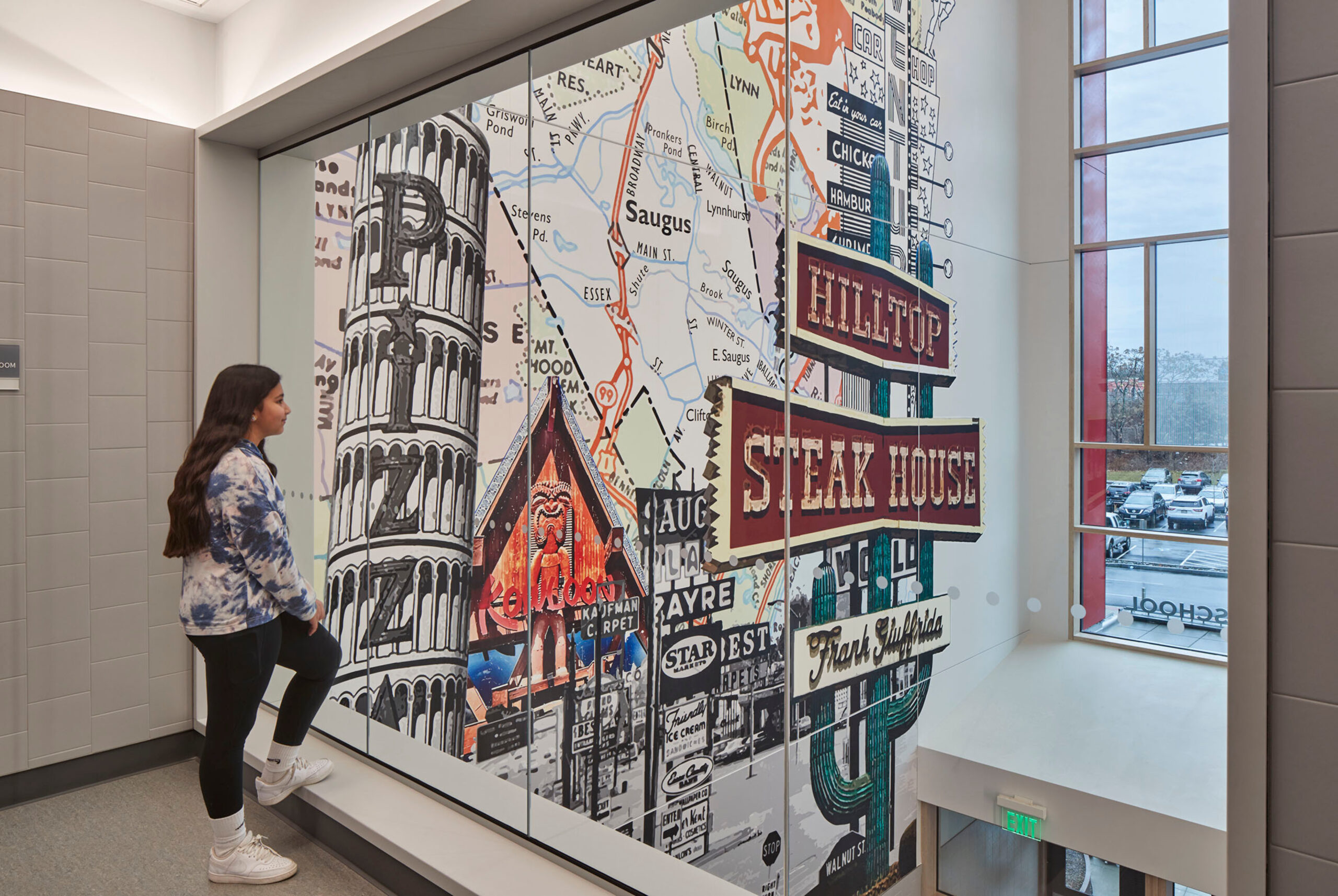
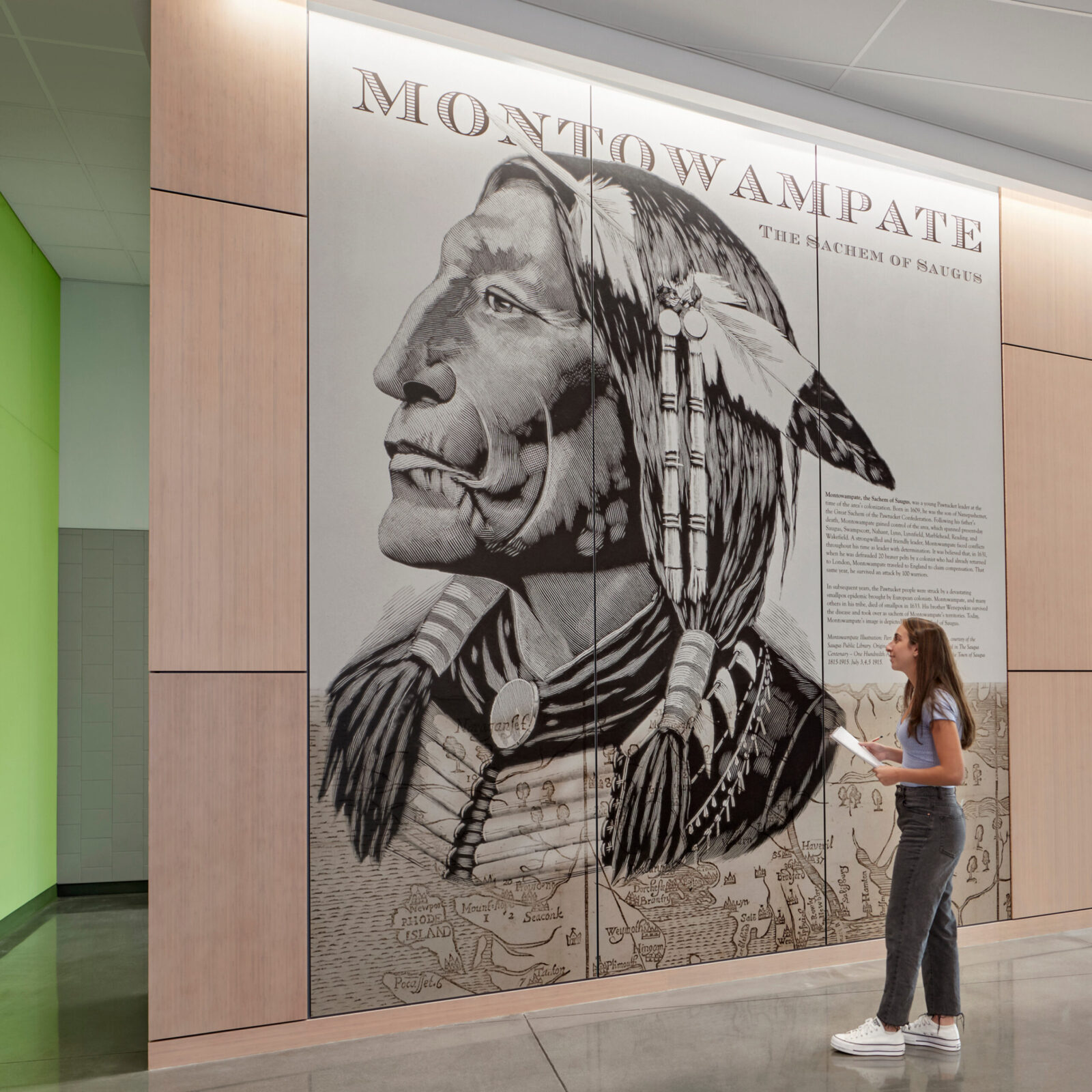
Former principal and current superintendent of Saugus Public Schools, Michael Hashem, admits he was originally skeptical about the value of murals during the design process. A self-described “old school math teacher,” he wasn’t initially convinced they would make a meaningful difference. But now he calls himself a convert: “They [the murals] make the school feel unique and very special. It is a big school, but it does not feel like an institutional, sterile building at all. It always feels very warm and welcoming for users and visitors.”
The middle high school is organized into four grade-level pods, each anchored by a mural inside a tall, light-filled project area. The murals reflect local historic industries (e.g., iron, ice, and lobstering), giving students a visual and symbolic connection to their community. The unique sense of place helps students identify and feel connected to these “home bases” and to their grade-level peers.
One mural, composed entirely of typographic inspirational quotes, blurs the line between image and message. At first, viewers may take in the overall shape, then gradually absorb the motivational words embedded within.
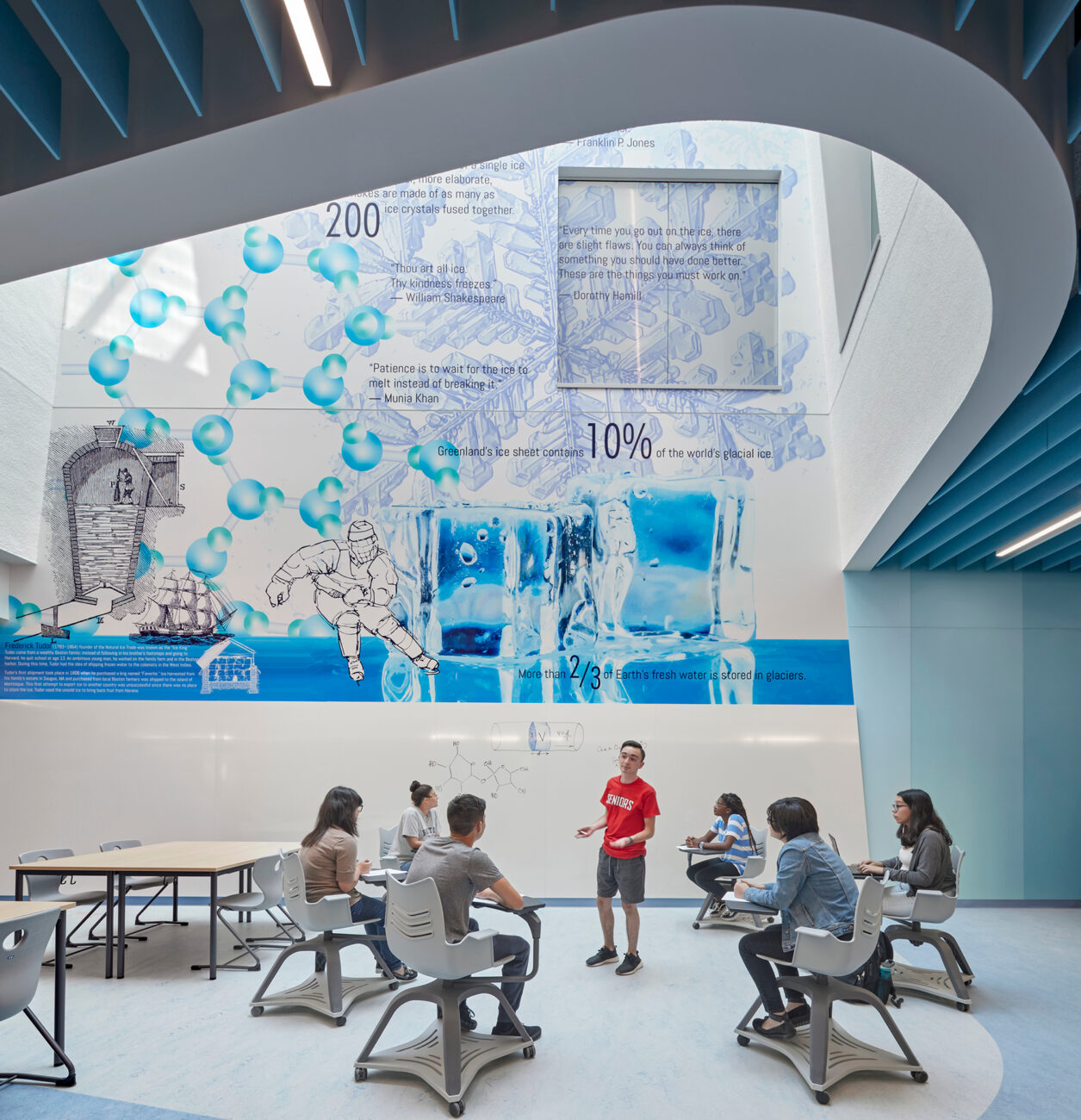
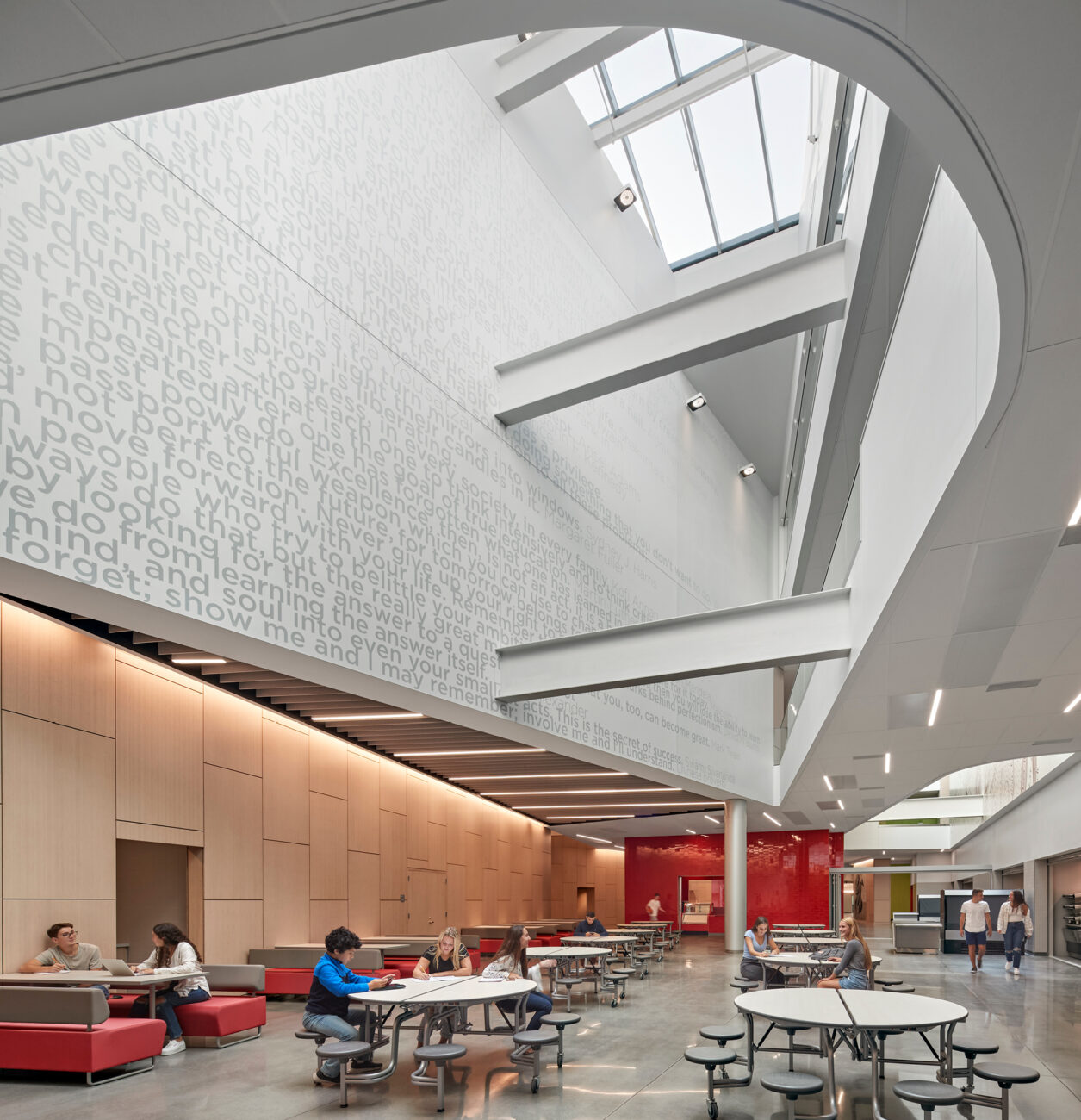
“The graphics are so unexpected and varied that everyone is immediately struck by them,” says Hashem. “People stop to study them. It is a real school identifier.”
Bristol County Agricultural High School: Aligning design with curriculum
At Bristol County Agricultural High School (AKA Bristol Aggie), we designed murals to highlight the school’s focus on environmental science and sustainability. Here, the graphics serve as large-scale educational tools, visually supporting the school’s unique technical curriculum and agricultural roots.
For superintendent and director, Derek Costa, the murals are more than just visual enhancements; they’re storytelling devices.
As he tours prospective families through the campus, Costa often pauses to point out graphics that reflect Bristol Aggie’s core values: ecological engagement and hands-on, student-centered learning. A composting toilet mural and illustrated carbon cycle are two favorites, helping reinforce sustainable practices and the school’s commitment to embedding those values in everyday operations.

While many of the murals are purposefully didactic, they also invite imagination. For example, one mural features a two-story cornucopia—a collage of oversized plants and animals—that connects to the school’s agricultural curriculum with a delightful mix of color and humor.
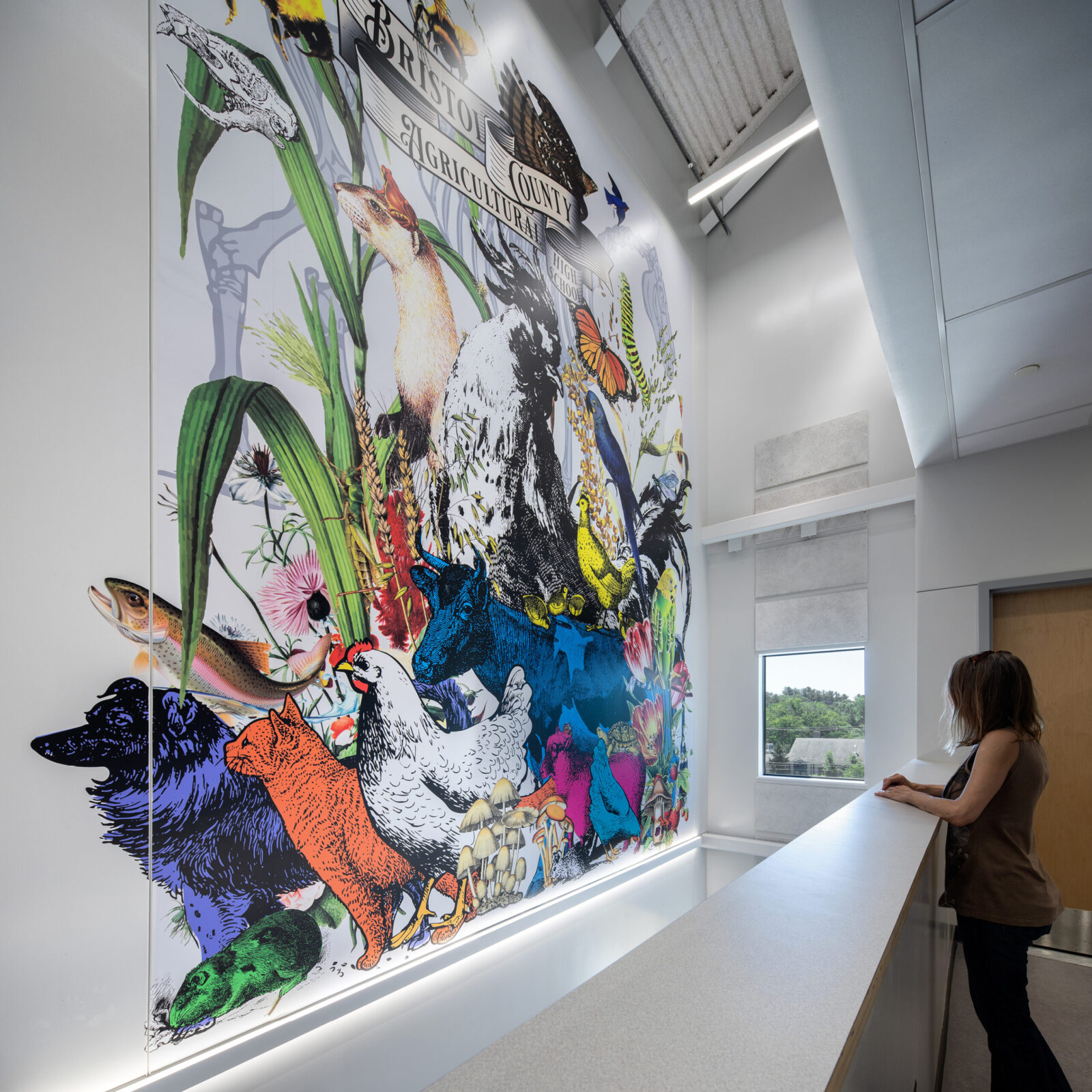
Annie E. Fales Elementary School: Creating wonder for early learners
For Fales Elementary School, which serves grades K–3, the goal was clear: create joyful, immersive graphics that stimulate young learners’ imaginations and connect them with the school’s ecology.
Naturally, the school mascot, Annie the hedgehog, plays a key role, starring in a series of narrative murals throughout the building. In one, she hikes through a woodland; in another, she scuba-dives in a pond; in yet another, she parachutes into a meadow. Each mural is filled with tiny details and hidden elements that invite engagement and ongoing discovery.
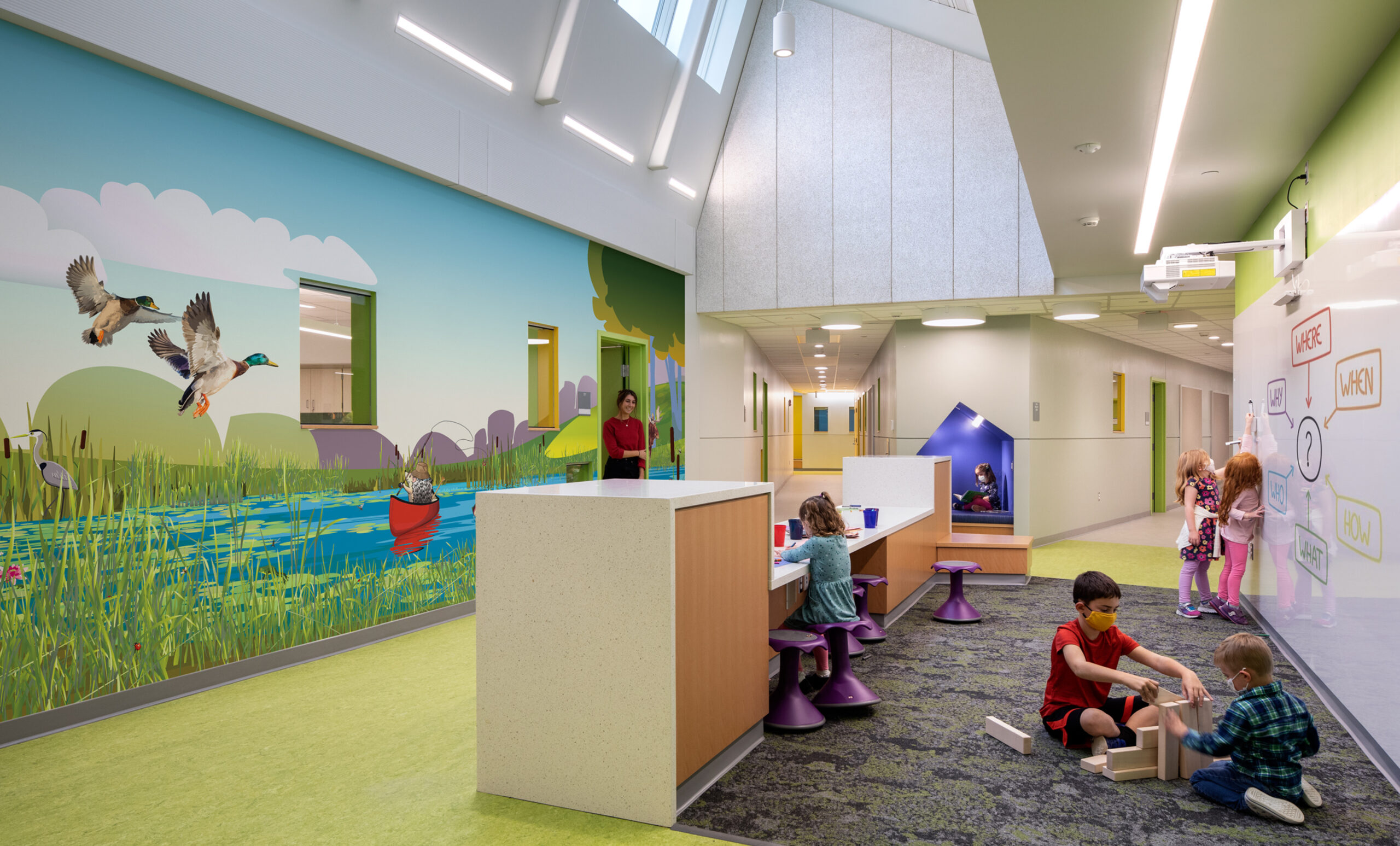
Principal Maryann Stannard reflects on the murals’ impact: “It is especially rewarding to see new children and their parents when they first see the murals. There is a sense of ongoing joy in discovery as children see new things, like the different flowers and insects. The graphics help create a magical place perfect for early elementary students.”
Beyond their aesthetic appeal, the murals play an important role in supporting classroom learning.
In early grades, the murals help frame conversations about ecosystems. In third grade, students turn to the murals for inspiration to write stories about Annie and her adventures. Even for educators, the murals can serve as a tool for connection and comfort; for example, in times of stress, a teacher can use the graphics for a quick game of “I Spy” to calm a child and redirect focus.
A Lasting Impact with Design
From elementary schools to technical schools and middle high schools, murals can play a transformative role in design. They do more than decorate the walls; they enrich learning environments, support curriculum, and reinforce school identity to help students feel more connected to their community.